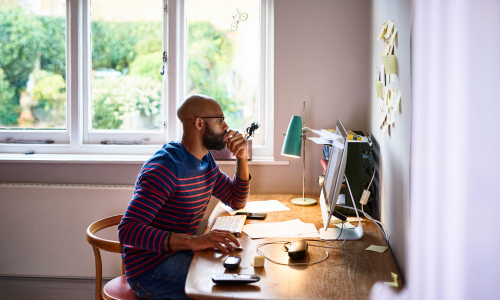The Foundations of Learning: How People Learn

In our last blog post, we explored why people learn, touching on how emotional connections can enhance successful learning. The key, we discovered, was to introduce information that’s both meaningful and relevant to the learner. Now, we will look at the “how” behind learning.
People learn through a variety of processes and experiences that involve acquiring new knowledge, skills, behaviors, and understanding. Learning is a complex and multifaceted process that can occur through different methods and in various environments. As 21st-century learning professionals, we enjoy the advantage of having extensive access to a wealth of research focused on the science of human learning.. Knowing these theories could contribute to the overall success of your L&D initiatives. So, let’s dive into the key theories and models that drive how we learn:
- Cognitive Learning Theory: This theory emphasizes the role of mental processes in learning. It suggests that learning involves attention, perception, memory, and problem-solving. When learning, people actively process and organize information to make sense of it and integrate it into their existing knowledge.
- Behaviorism: Behaviorist theories, like classical or operant conditioning, focus on how external stimuli and rewards/punishments influence behavior and learning. Positive reinforcement, negative reinforcement, and punishment play a significant role in shaping behaviors and promoting learning.
- Constructivism: This theory emphasizes the role of the learner’s active engagement in constructing their own knowledge. Learners build on their previous experiences and understanding, to connect new information to their existing mental structures. Pro Tip: as an Instructional Designer, this is one my personal favorites for getting learners to apply skills, which often lead to successful transfer! More on that in October’s “When People Learn” blog post…
- Social Learning Theory: This theory emphasizes the importance of observing and modeling the behaviors, attitudes, and emotional reactions of others. Social interactions and role models can greatly influence how people learn and adopt new behaviors. Pro Tip: This is a major post-COVID consideration, since the rise of remote and hybrid work makes institutional knowledge or casual knowledge exchange less accessible. How will your team compensate for this?
- Experiential Learning: Learning through direct experiences is powerful, People learn by doing, reflecting on those experiences, and extracting lessons from successes and failures. This approach is often seen in hands-on activities, simulations, and real-world applications. Pro Tip: You will want to take advantage of experiential learning as much as possible since learning often “sticks” in the application of the new skill, process, procedure, etc.
- Cognitive Load Theory: This theory focuses on the limitations of working memory and how learners process information. It suggests that presenting information in ways that reduce cognitive load (the mental effort required to process information) can enhance learning. Pro Tip: Think like an instructional designer! You get to be the superhero who can reduce a learner’s cognitive load with user-friendly designs.
- Multiple Intelligences: Proposed by Howard Gardner, this theory suggests that people possess different types of intelligence, such as linguistic, logical-mathematical, spatial, musical, interpersonal, and intrapersonal. Learning experiences that cater to these different intelligences can be more effective.
- Information Processing Model: This model compares human memory to a computer’s information processing system. It includes three stages: sensory memory, short-term memory, and long-term memory. Learning involves encoding information into long-term memory through rehearsal and elaboration. And dare I say, interactive simulations?
- Self-Directed Learning: In this approach, individuals take responsibility for their learning process. They identify their learning goals, gather resources, and actively engage in activities to achieve those goals. This is common in adult education and online learning environments. Remember that this is one of the hardest styles to lean upon as a learning leader. Individuals must be highly motivated to succeed in this model.
- Neuroscience and Brain Plasticity: Advances in neuroscience have shed light on how the brain changes in response to learning. Neuroplasticity, the brain’s ability to reorganize itself, shows that learning physically alters the brain’s structure and function. Pretty cool right?! It also means that old dogs, can in fact learn new tricks. They simply must be motivated to do so and given easy access to new learning experiences.
- Motivation and Engagement: Motivation plays a crucial role in learning. When learners are motivated and engaged, they are more likely to actively participate in the learning process, persist through challenges, and retain information. Our “The Foundations of Learning” series has already touched on this a bit, but it deserves its own spot on the list!
- Feedback and Reflection: Constructive feedback and opportunities for reflection help learners understand their progress, identify areas for improvement, and reinforce their learning. Pro Tip: I especially love partnering this style with hands-on workshops; implementing a feedback loop between facilitator and peers typically yields high success rates.
Modern technology and educational approaches have expanded the ways in which people can learn, including online courses, interactive simulations, virtual reality, and more. Ultimately, learning is a dynamic and ongoing process that varies from person to person and context to context. Happy learning and good luck with your next endeavor! We hope that our love of learning here at Litmos has inspired you to make the best experiences for your learners!





